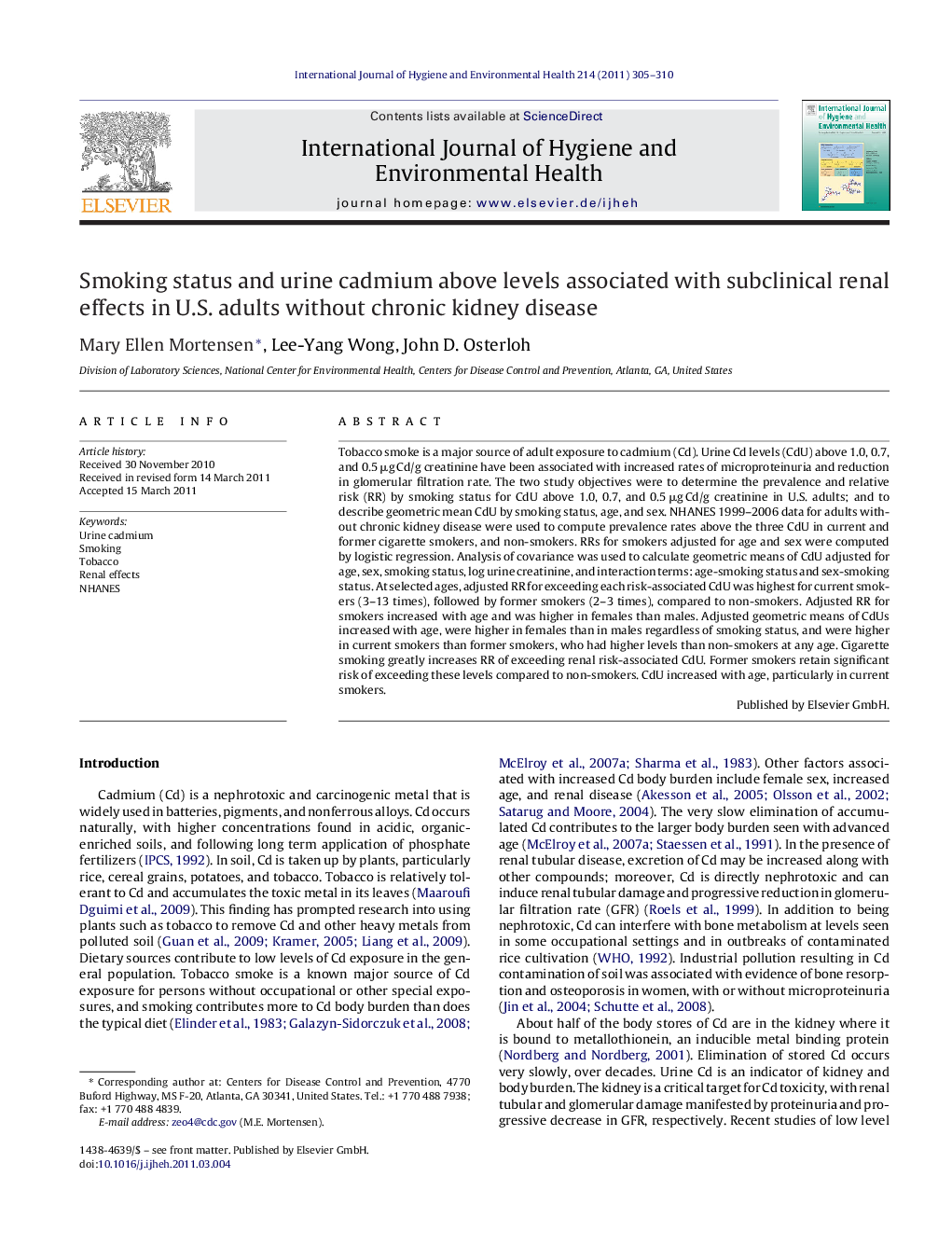| Article ID | Journal | Published Year | Pages | File Type |
|---|---|---|---|---|
| 2588683 | International Journal of Hygiene and Environmental Health | 2011 | 6 Pages |
Abstract
Tobacco smoke is a major source of adult exposure to cadmium (Cd). Urine Cd levels (CdU) above 1.0, 0.7, and 0.5 μg Cd/g creatinine have been associated with increased rates of microproteinuria and reduction in glomerular filtration rate. The two study objectives were to determine the prevalence and relative risk (RR) by smoking status for CdU above 1.0, 0.7, and 0.5 μg Cd/g creatinine in U.S. adults; and to describe geometric mean CdU by smoking status, age, and sex. NHANES 1999-2006 data for adults without chronic kidney disease were used to compute prevalence rates above the three CdU in current and former cigarette smokers, and non-smokers. RRs for smokers adjusted for age and sex were computed by logistic regression. Analysis of covariance was used to calculate geometric means of CdU adjusted for age, sex, smoking status, log urine creatinine, and interaction terms: age-smoking status and sex-smoking status. At selected ages, adjusted RR for exceeding each risk-associated CdU was highest for current smokers (3-13 times), followed by former smokers (2-3 times), compared to non-smokers. Adjusted RR for smokers increased with age and was higher in females than males. Adjusted geometric means of CdUs increased with age, were higher in females than in males regardless of smoking status, and were higher in current smokers than former smokers, who had higher levels than non-smokers at any age. Cigarette smoking greatly increases RR of exceeding renal risk-associated CdU. Former smokers retain significant risk of exceeding these levels compared to non-smokers. CdU increased with age, particularly in current smokers.
Keywords
Related Topics
Life Sciences
Environmental Science
Health, Toxicology and Mutagenesis
Authors
Mary Ellen Mortensen, Lee-Yang Wong, John D. Osterloh,
